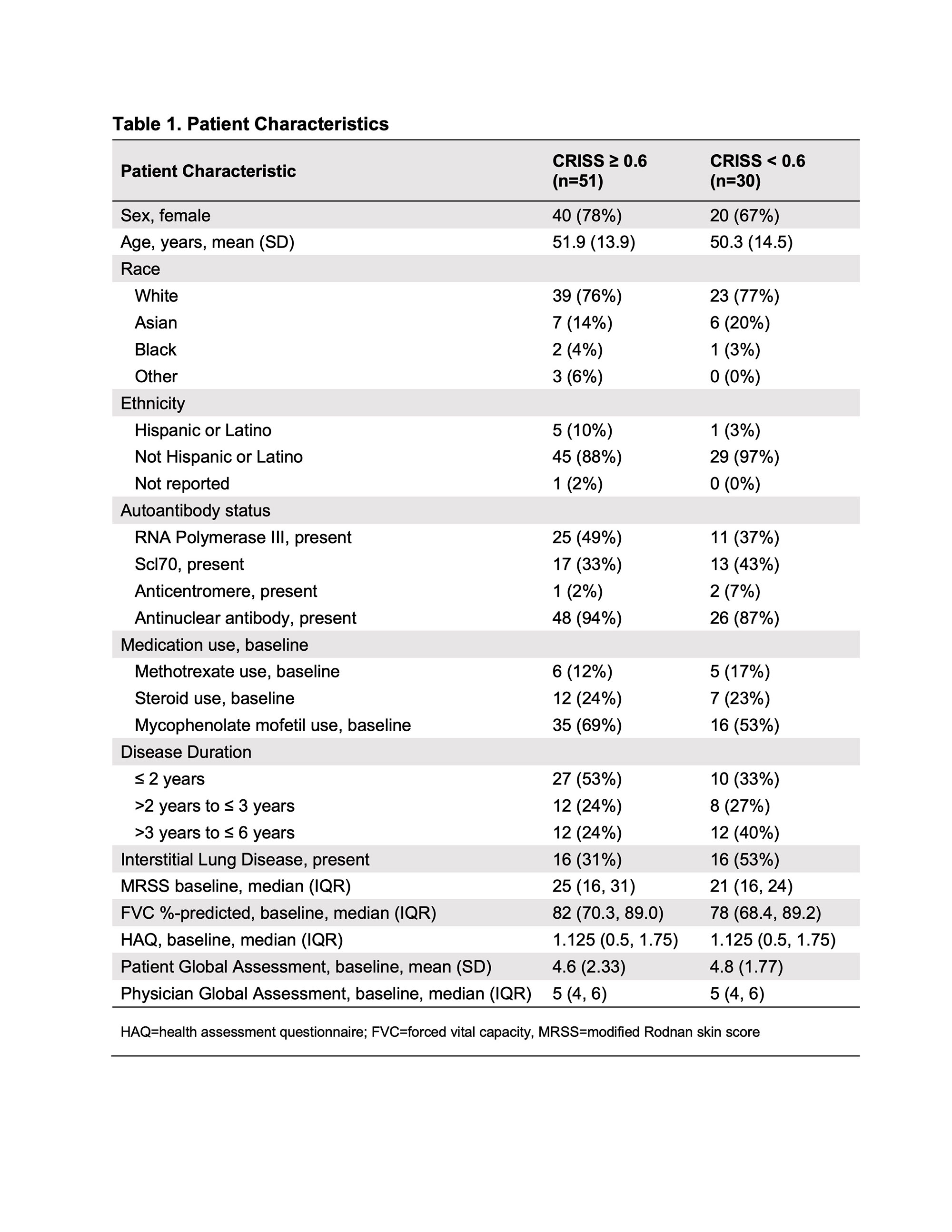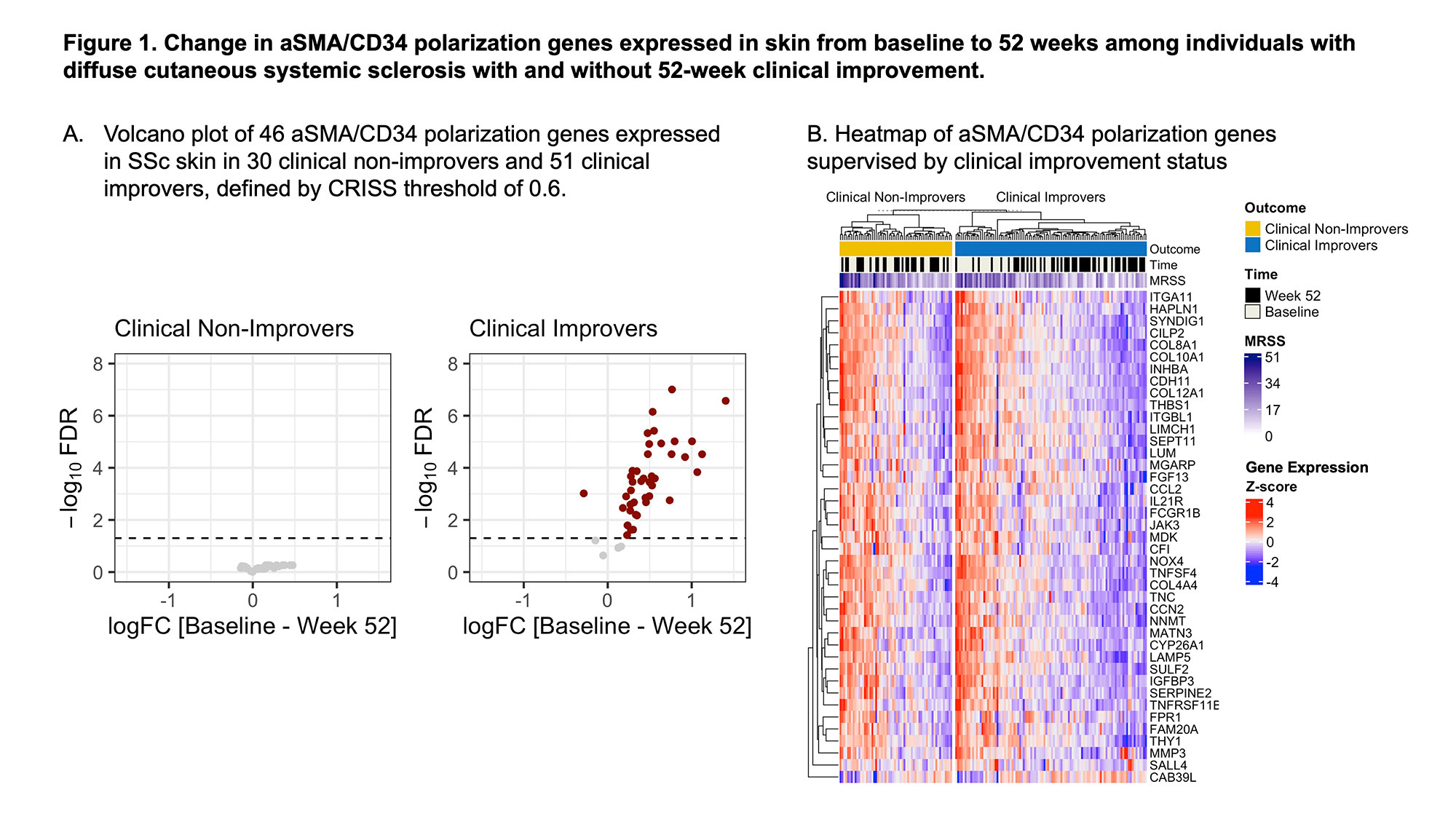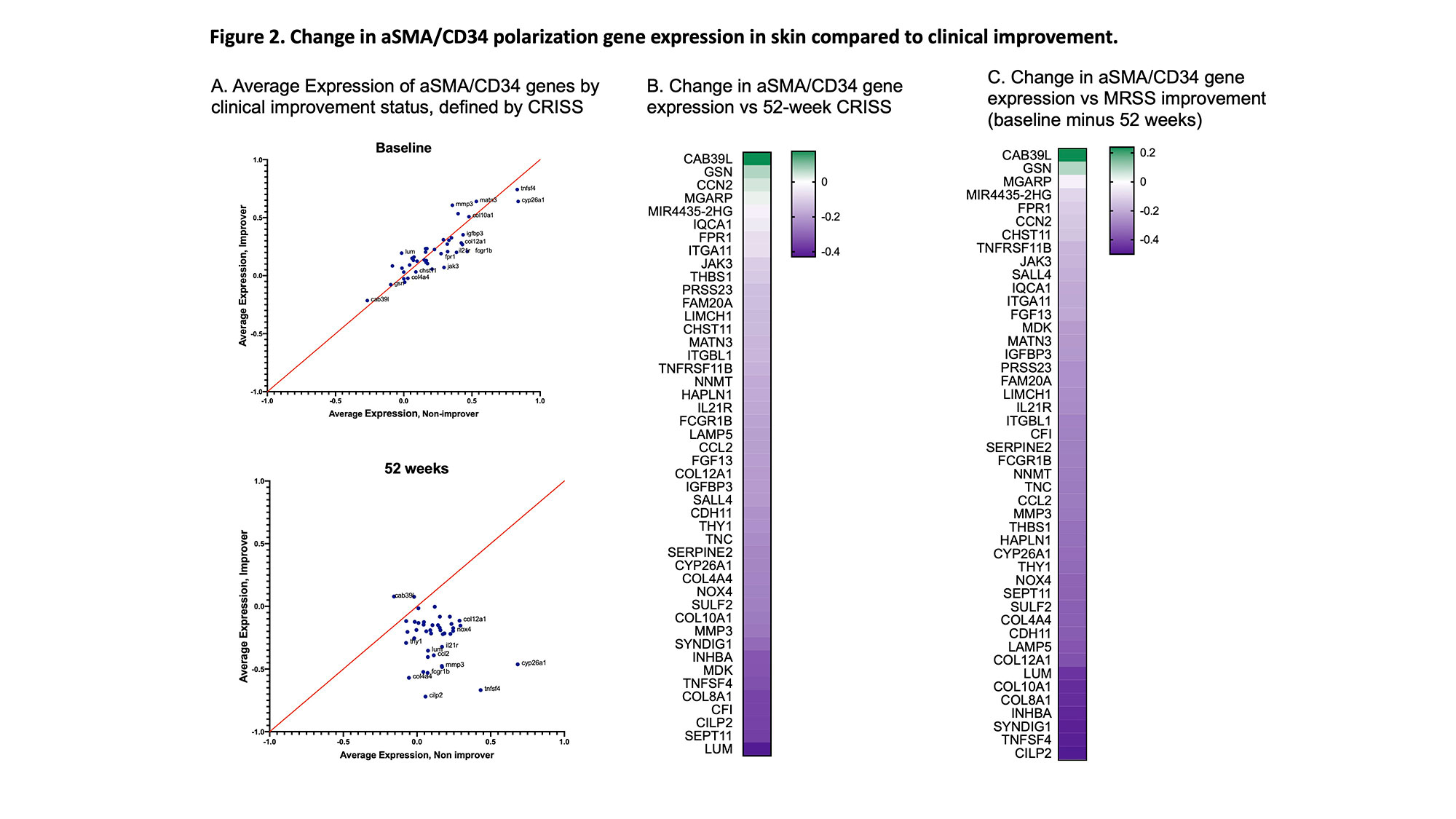Session Information
Date: Saturday, November 12, 2022
Title: Abstracts: Systemic Sclerosis and Related Disorders – Clinical I: Trials and Therapeutics
Session Type: Abstract Session
Session Time: 3:00PM-4:30PM
Background/Purpose: We previously identified a group of genes associated with high alpha-smooth muscle actin (aSMA) and low CD34 fibroblast staining in lesional systemic sclerosis (SSc) skin that decreased with clinical improvement in patients treated with belimumab or nilotinib. The purpose of this study is to evaluate this aSMA/CD34 (fibroblast) polarization gene expression signature as a biomarker of clinical improvement in a larger validation cohort of individuals with early, diffuse cutaneous (dc) SSc.
Methods: Skin biopsies were analyzed from 81 patients with dcSSc enrolled in the Phase III RESOLVE-1 clinical trial of lenabasum in SSc. The trial did not demonstrate lenabasum to be superior to placebo, so for the purposes of this analysis we did not stratify by treatment assignment. Clinical data were collected including patient demographics, SSc autoantibody profile, disease duration, modified Rodnan skin score (MRSS), and 52-week Combined Response Index in Systemic Sclerosis (CRISS). 52-week “clinical improvement” was defined as CRISS ≥0.6. Expression of 46 previously identified aSMA/CD34 polarization genes, measured by Agilent microarray, was evaluated in each sample. Pearson correlation coefficients were calculated for change in aSMA/CD34 polarization gene expression (Log2(fold-change baseline vs. 52 weeks)) and 52-week (A) CRISS and (B) change in MRSS.
Results: Baseline characteristics of 81 patients are shown in Table 1. Among clinical improvers, 42 of the 46 aSMA/CD34 polarization genes significantly decreased between baseline and 52-weeks, while 0 of 46 genes changed significantly in clinical non-improvers (Fig. 1A). In the clinical improvers, the baseline samples clustered together, along with higher MRSS scores and higher aSMA/CD34 polarization gene expression, compared to 52-week samples (Fig. 1B). On the other hand, there was no clustering according to time (baseline vs. 52 weeks) in non-improver samples. Average expression of aSMA/CD34 polarization genes was plotted for improvers vs. non-improvers for baseline and 52-week samples. Average gene expression in improvers (vs. non-improvers) was similar at baseline but decreased at 52 weeks in improvers (Fig. 2A). LUM, SEPT11, SILP2 and CFI were most strongly correlated with 52-week CRISS, (Fig. 2B), and CILP2, TNFSF4, SYNDIG1 and INHBA were most strongly correlated with MRSS change (Fig. 2C).
Conclusion: The gene expression signature of aSMA/CD34 polarization decreases significantly from baseline to 52 weeks among clinical improvers but is unchanged in those who do not improve. These results validate previous findings that aSMA/CD34 polarization gene expression signatures decrease in patients with clinical improvement and suggest fibroblasts can recover, potentially by repopulating or differentiating, in the improving skin of patients with SSc.
To cite this abstract in AMA style:
Showalter Lakin K, Jannat-Khah, DrPH, MSPH D, Shah Y, Elemento O, Bloostein A, Gordon J, Whitfield M, White B, Orange D, Spiera R. Changes in Skin Fibroblast Polarization Gene Expression Herald Clinical Improvement in Early, Diffuse Cutaneous Systemic Sclerosis [abstract]. Arthritis Rheumatol. 2022; 74 (suppl 9). https://acrabstracts.org/abstract/changes-in-skin-fibroblast-polarization-gene-expression-herald-clinical-improvement-in-early-diffuse-cutaneous-systemic-sclerosis/. Accessed .« Back to ACR Convergence 2022
ACR Meeting Abstracts - https://acrabstracts.org/abstract/changes-in-skin-fibroblast-polarization-gene-expression-herald-clinical-improvement-in-early-diffuse-cutaneous-systemic-sclerosis/



